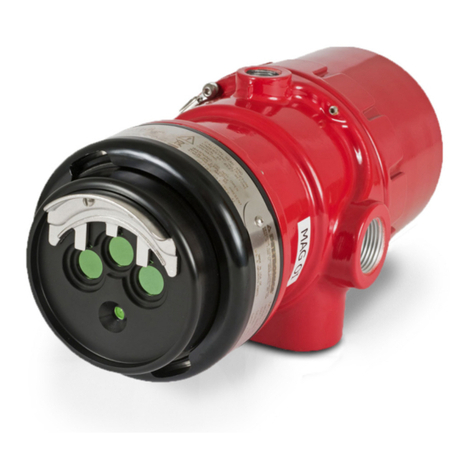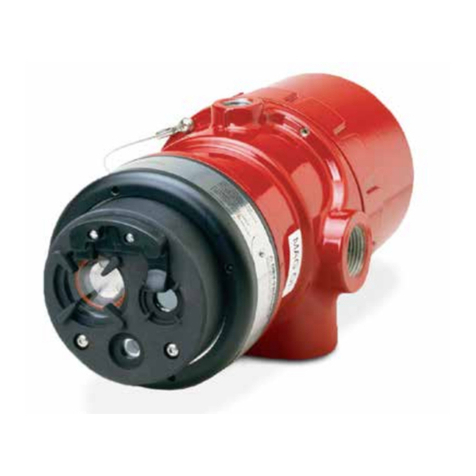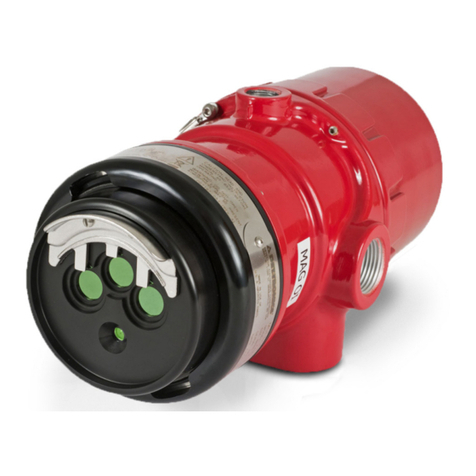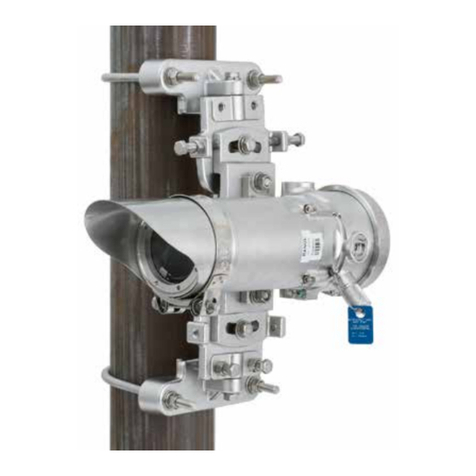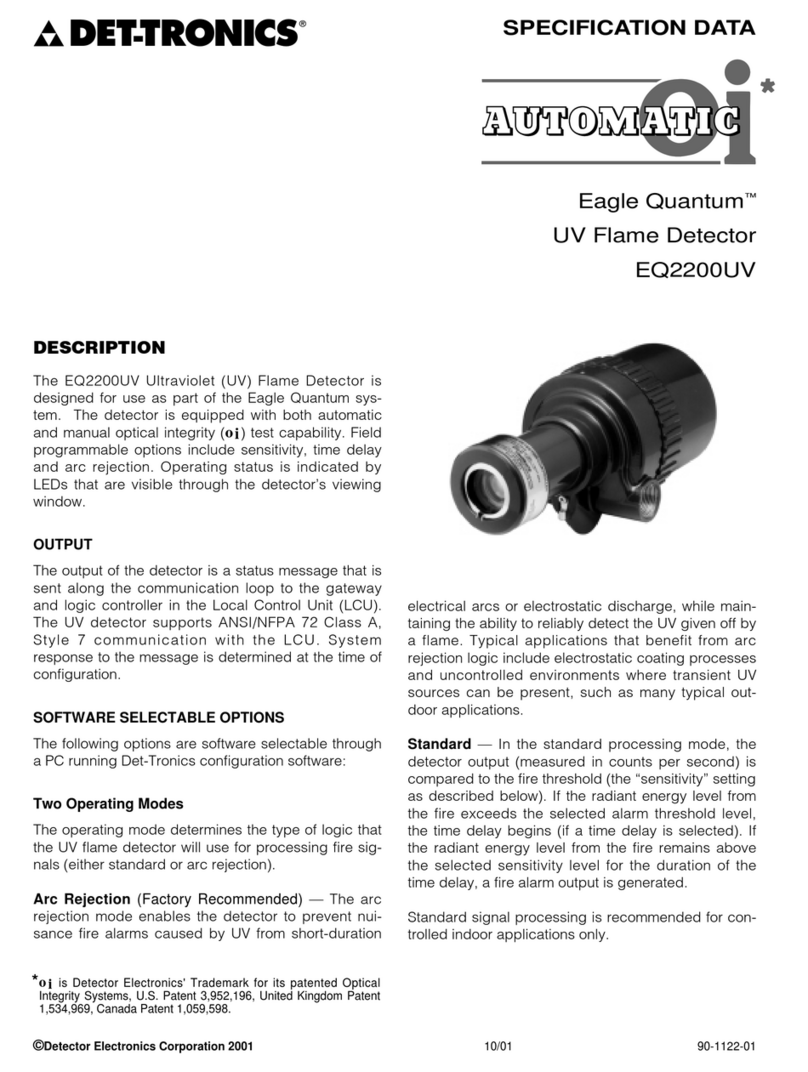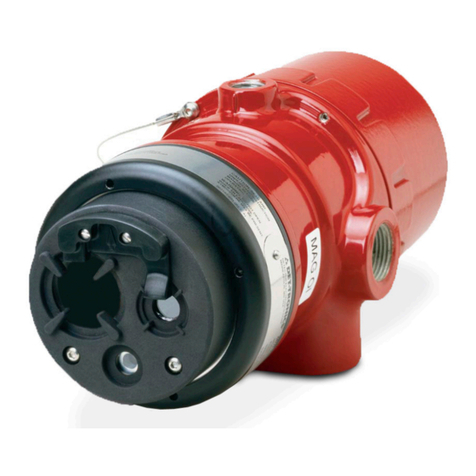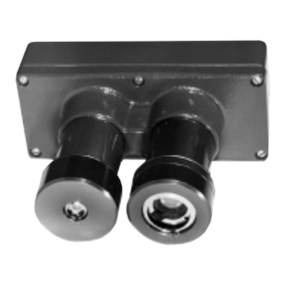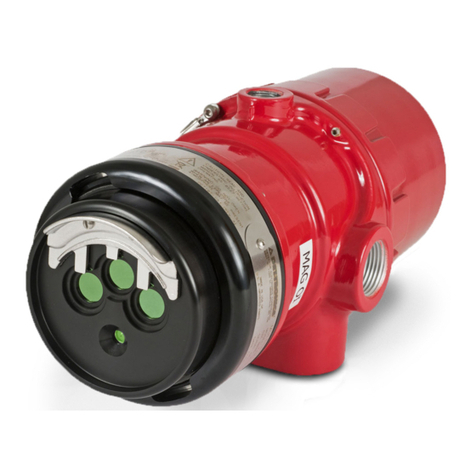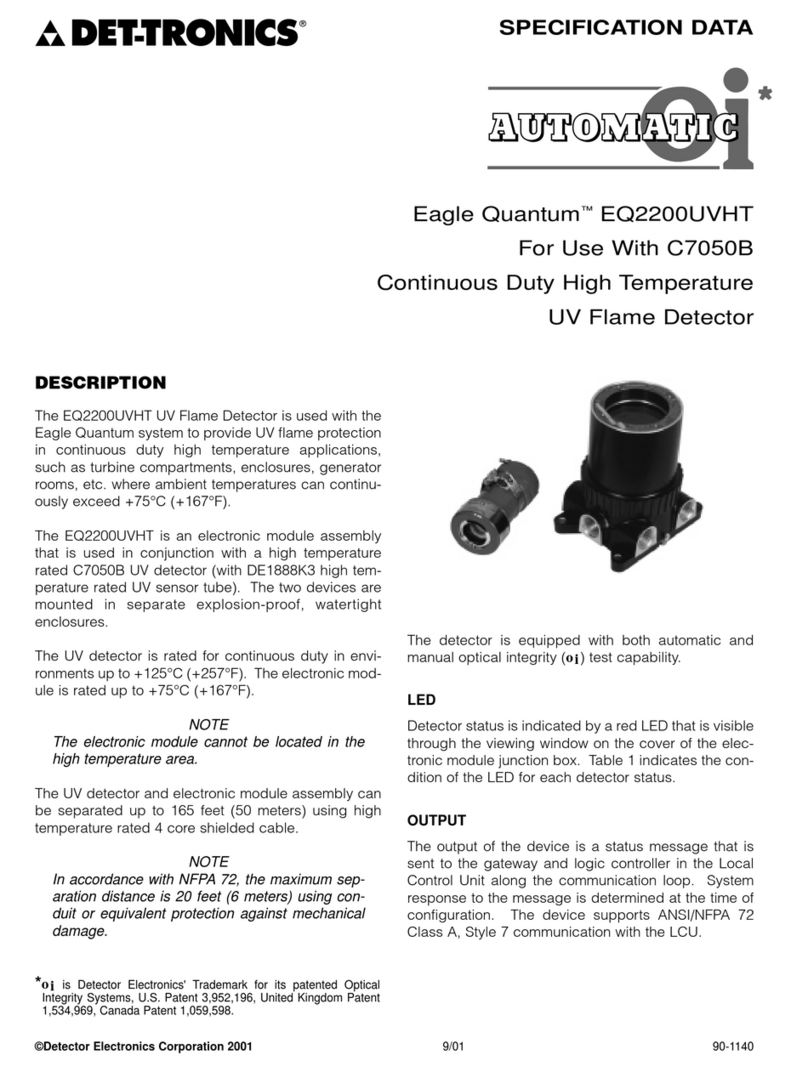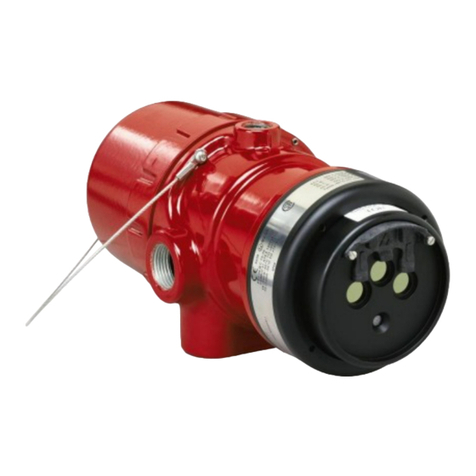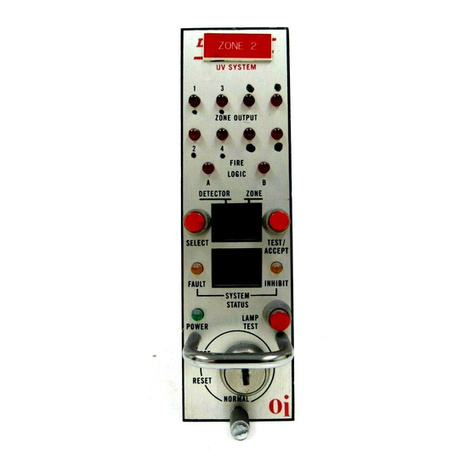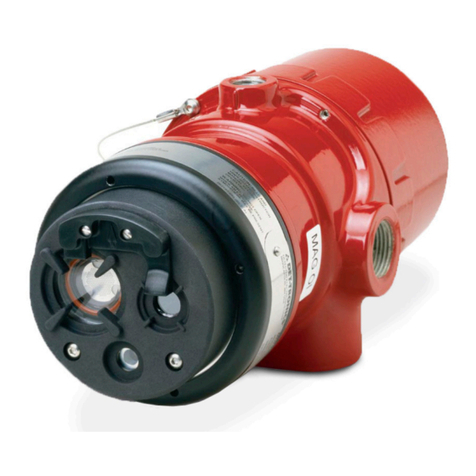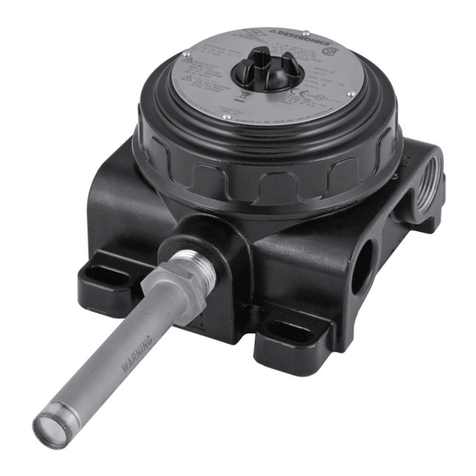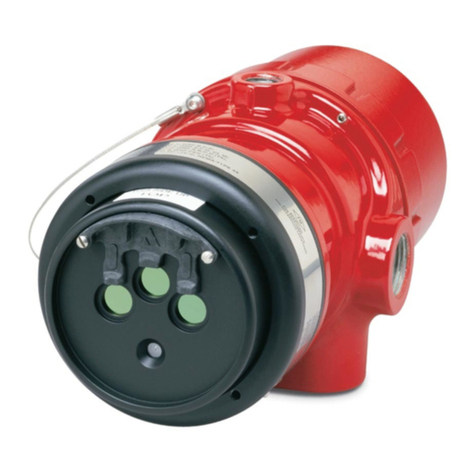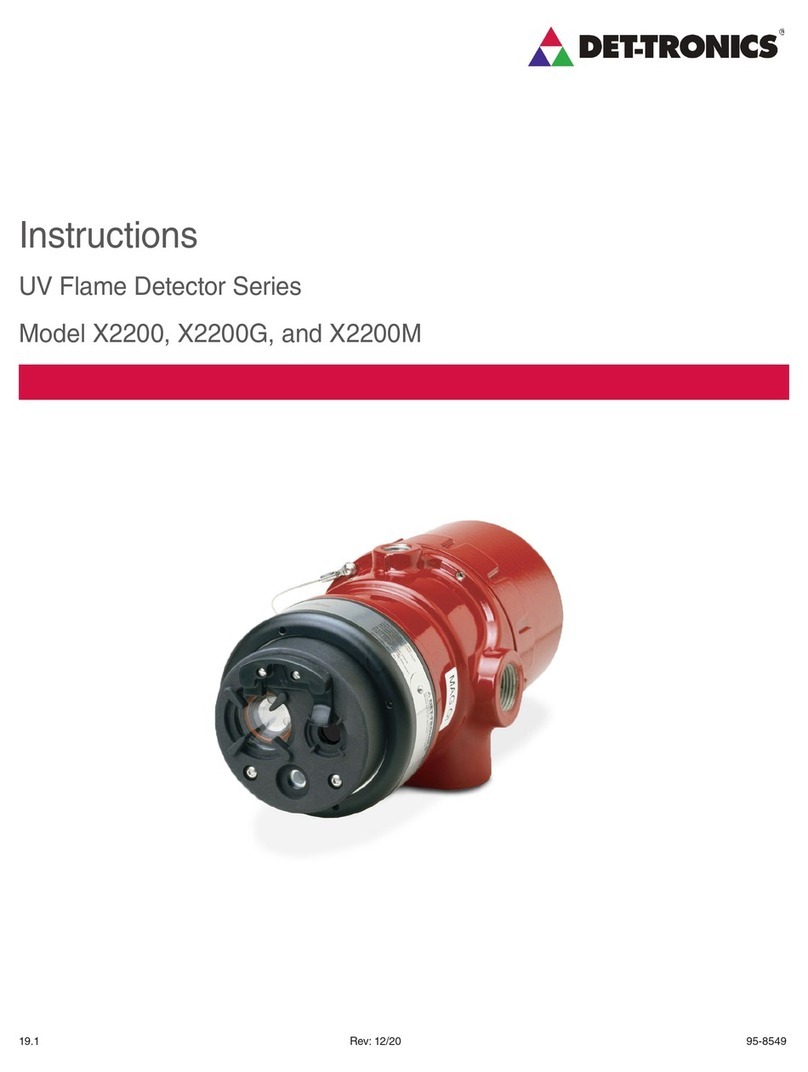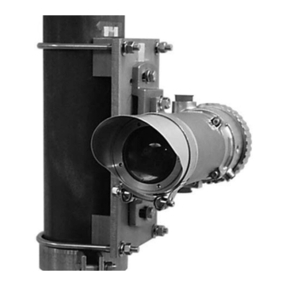
395-85528.2
IMPORTANT
Mag
oi
can be performed with the controller’s
(R7404/R7494) keylock switch in either the
NORMAL or TEST position. In NORMAL, the
controller goes into alarm and activates its outputs.
If no controller alarm output is desired, place
the keylock switch in the TEST position before
touching the magnet to the outside of the detector.
Man
oi
operates only with the keylock switch in
the TEST position.
During the entire test, the detector gives no indication
of alarm.
To reset the controller status and alarms, place the
keylock switch in RESET. Return the keylock switch to
NORMAL when testing is complete.
The Man
oi
test is nearly identical to the Mag
oi
test,
except for the manner in which the test is initiated:
• Place the keylock switch on the controller (R7404/
R7494) in the TEST position.
• Press the SELECT button to select the appropriate
detector for test.
• Press the TEST/ACCEPT button to initiate the test.
Controller and detector responses are identical to the
Mag
oi
test described above.
To reset the controller status and alarms, place the
keylock switch in RESET. Return the keylock switch to
NORMAL when testing is complete.
NOTE
Refer to Appendix A for FM verification of the
oi
function.
COMMUNICATION
The X2200 is furnished with an RS-485 interface for
communicating status and other information with external
devices. The RS-485 supports Modbus protocol, with the
detector configured as a slave device.
DATA LOGGING
Data logging capability is also provided. Status conditions
such as normal, power down, general and oifaults, pre-
alarm, fire alarm, time, and temperature are recorded.
Each event is time and date stamped, along with the
temperature and input voltage. Event data is stored in
non-volatile memory when the event becomes active,
and again when the status changes. Data is accessible
using the Inspector Connector accessory or RS-485.
INTEGRAL WIRING COMPARTMENT
All external wiring to the device is connected within the
integral junction box. The detector is furnished with four
conduit entries, with either 3/4 inch NPT or M25 threads.
SIGNAL PROCESSING OPTIONS
The UV detector output (measured in counts per second)
is compared to the fire threshold (the “sensitivity”
setting). If the radiant energy level from the fire exceeds
the selected alarm threshold level, the fire alarm output is
activated. In every application, it is crucial to ensure that
the radiant ultraviolet energy level from the expected fire
at the required distance from the detector will exceed the
selected sensitivity level.
The UV detector in the X2200 can be programmed for:
– Arc Rejection
– Standard Signal Processing.
Arc Rejection
The Arc Rejection mode enables the detector to
prevent nuisance fire alarms caused by UV from short-
duration electrical arcs or electrostatic discharge,
while maintaining the ability to reliably detect the UV
radiation given off by a flame. Typical applications that
benefit from arc rejection logic include electrostatic
coating processes and uncontrolled environments where
transient UV sources can be present, such as many
typical outdoor applications. Most false alarm sources
have short transient UV signatures, while fire creates
a long UV signature over many seconds. Most fires
are detected in a few seconds (see response times in
Appendix A).
Standard Signal Processing
Standard signal processing is recommended for high-
speed suppression systems only. To allow for high-speed
operation, the standard processing mode does not
incorporate the arc rejection programming. This mode
should only be used in a controlled, indoor environment.
